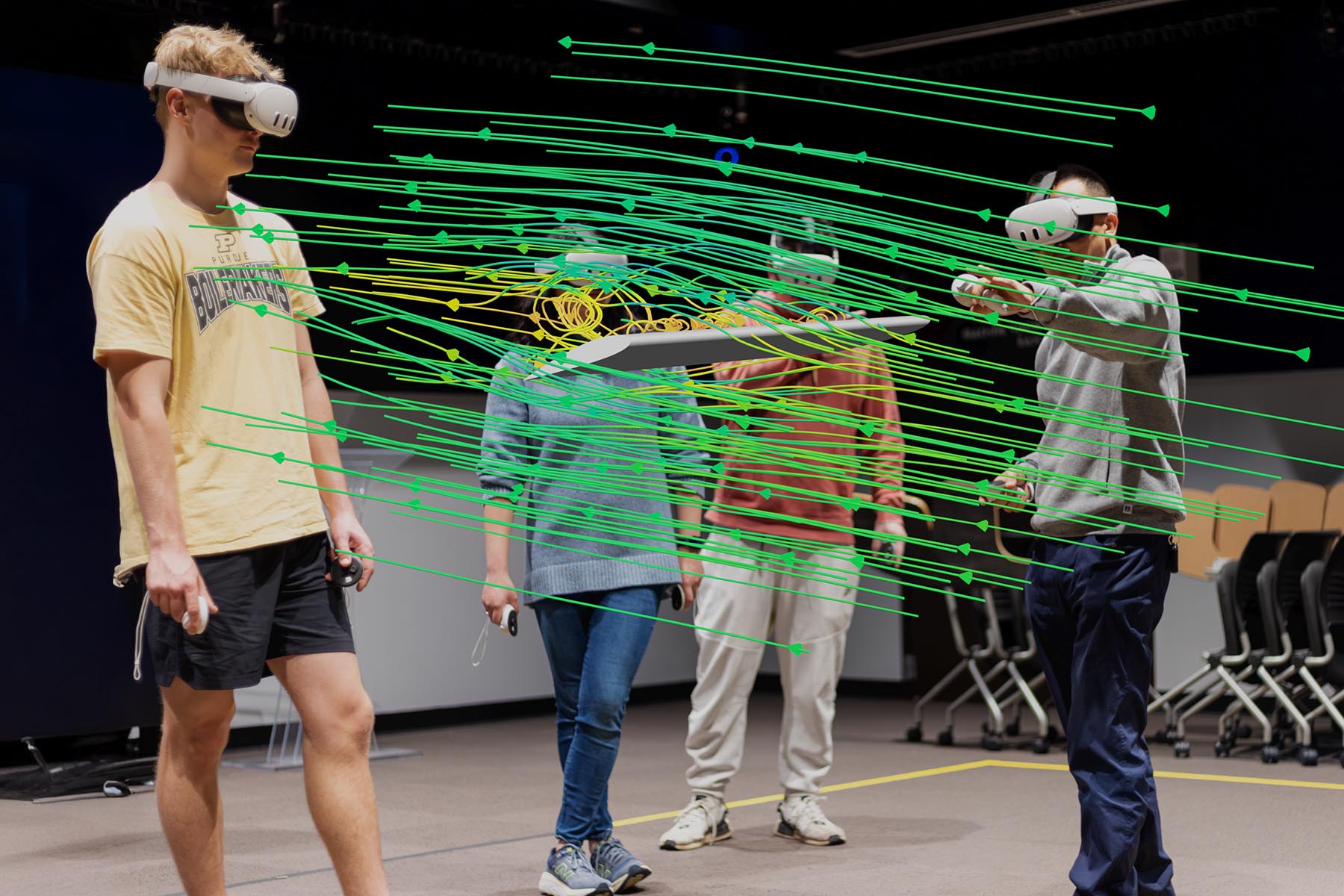VR wind tunnel helps students visualize fluid mechanics
VR wind tunnel helps students visualize fluid mechanics
Navier-Stokes equations, Reynolds transport theorem, Bernoulli’s principle — the fundamentals of fluid mechanics can be baffling to engineering students. Purdue University researchers are working to change that. They have collaborated on a virtual reality (VR) educational platform enabling students to visualize the principles of fluid mechanics — even walking inside the wind tunnel to see the unseeable.
“Fluid Mechanics is probably the most difficult subject in our entire curriculum,” said Jun Chen, professor of mechanical engineering, who has taught the course for many years. “Most fluids like air or water are invisible, which make it very difficult to visualize — especially if we have complex three-dimensional or dynamic phenomena.”
After learning the mathematical theory behind different types of flows, students typically conduct experiments in a wind tunnel. They place scale models inside of a test section of fast-moving air, and record the pressure and speed at different points around the model. But it’s not a perfect system.
“Those are just numbers in a spreadsheet,” Chen said. “We might use other tools to validate the flow, like dyes or smoke. But overall, our capacity to visualize these phenomena for students is very limited.”
Enter the Envision Center, Purdue’s hub for data visualization. They developed a platform called CollabXR, where students and educators wearing VR headsets can simultaneously view and interact with a 3D visualization in an immersive shared environment.
“These headsets have cameras built in, so everyone can still see the real room environment and the people around them,” said Eric Palmer, lead research scientist at the Envision Center. “In the middle of the room is the virtual content, which they can interact with in 3D. Using their controllers, they can grab it, move it, scale it, draw on it with live diagramming, walk around it, and even walk through it to see the interior structures. This is impossible to do with a flat computer screen or a Powerpoint presentation.”
As a pilot project, Chen worked with the Envision Center to build a 3D visualization of air moving over an airfoil (i.e. the shape of an airplane wing). This is one of the typical labs students perform in a wind tunnel with a hand-sized airplane wing model, notating speed and pressure measurements in a spreadsheet. But in the 3D visualization, the wing comes alive. Airflow indicators change color as they increase speed. Students can zoom in on complex interactions. Turbulent eddies can be seen behind the virtual airfoil, which weren’t noticeable in the wind tunnel.

“The first time I saw the 3D scene, I was shocked,” Chen said. “You can touch it, you can sense it, you can examine the details. I felt like I was fully immersed in the 3D structure.”
Students agree. One student struggled in lectures, but understood flow properties much better thanks to the visualization. Another student knelt down and looked up underneath the model, which would be impossible to accomplish in a wind tunnel.
“Once they get past the ‘wow’ factor, we want to get a little deeper and find out what students actually perceive with this system,” Palmer said. “How can we use this as a tool to help students understand more directly or more efficiently? And how can this help instructors convey difficult information?”
Chen is excited to further develop the pilot into a teaching module for the Fluid Mechanics course. There are challenges to overcome; for example, the data to generate the airfoil simulation required 10 hours to render. And as the largest ME school in the country, Chen has to wrestle with the logistics of hundreds of undergraduate students and only a few headsets to go around. But he says the end goal of the project justifies the hard work put into it.
“Fluid mechanics is a challenging subject, and it’s our job to motivate students to study it,” he said. “If this kind of experience even intrigues me as a faculty member, then we want every student to also have the opportunity to experience it.”
Source: Jun Chen, chen220@purdue.edu; Envision Center, envision@purdue.edu
Writer: Jared Pike, jaredpike@purdue.edu, 765-496-0374
